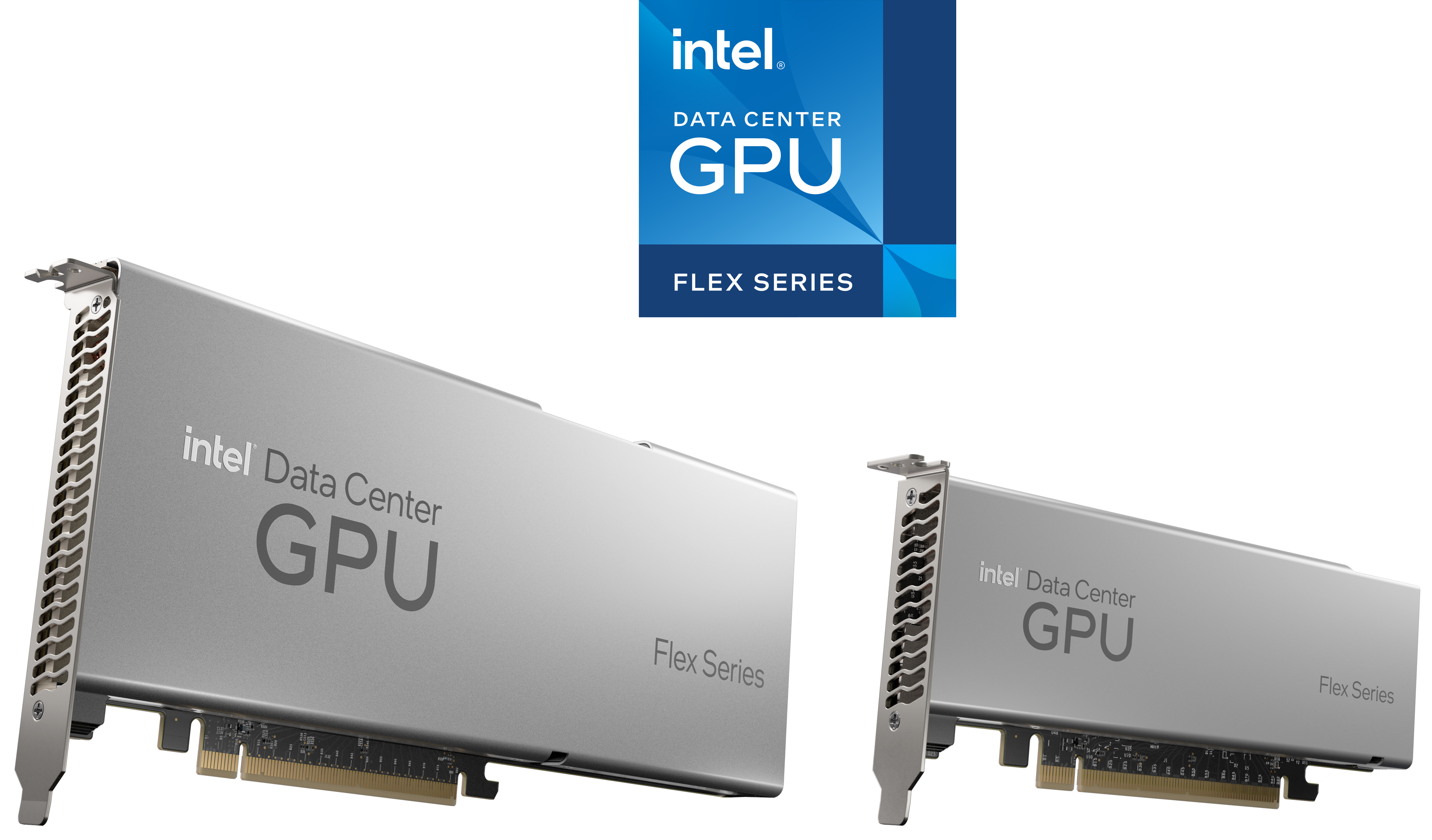Intel Launches Data Center GPU Flex Series for AI, Gaming, and Video
Intel has officially launched the Arctic Sound-M discrete GPU series.
Intel officially revealed its Data Center GPU Flex series on Wednesday — though it started shipping some of its Arctic Sound-M discrete processing units for datacenters about a month ago. The new graphics boards are based on the company's Arc Alchemist graphics processors and are aimed at a variety of datacenter applications, and will be available from various Intel partners when the products reach required levels of maturity.
Intel's Data Center GPU Flex family of graphics cards includes two base offerings: one aimed at performance-demanding workloads, and another designed for ultra-dense deployments. The single-chip Flex Series 170 is based on one ACM-G10 GPU with up to 32 Xe cores (equal to up to 4,096 stream processors) and 16GB of memory and is aimed at workloads requiring maximum performance. The dual-chip Flex Series 140 card carries two ACM-G11 GPUs with 16 Xe cores and 12GB of memory and is targeted at high-density machines.
Intel Data Center GPU Flex Specifications
| Row 0 - Cell 0 | Data Center GPU Flex 170 | Data Center GPU Flex 140 |
| GPU | ACM-G10 | 2x ACM-G11 |
| Xe Cores | 32 | 16 |
| Execution Units | 512 | 256 |
| Stream Processors | 4096 | 2048 |
| Ray Tracing Units | 32 | 16 |
| XMX Engines | 512 | 256 |
| Media Engines | 4 | 2 |
| GPU Base Clock | 1950 MHz | 1600 MHz |
| GPU Max Dynamic Clock | 2050 MHz | 1950 MHz |
| Memory | 16GB GDDR6 | 12GB GDDR6 (2x 6GB) |
| Memory Bus | 256-bit | 192-bit (2x 96-bit) |
| Memory Bandwidth | 576GB/s | 336GB/s |
| Host Interface | PCIe 4.0 x16 | PCIe 4.0 x8 |
| TBP/TDP | 150W | 75W |
Both cards and GPUs are powered by Intel's Xe-HPG architecture — designed primarily with gaming in mind, but which can also serve a wide variety of datacenter workloads, including artificial intelligence, Android and Windows cloud gaming, video transcoding (using HEVC, AV1, AVC, and VP9 codecs), and virtual desktop infrastructure (VDI) applications. For now, Intel positions these boards for Android cloud gaming as well as media transcoding workloads. AI, VDI, and Windows cloud gaming will only be supported "when product is fully mature."

Intel's Flex Series 170 (with one ACM-G10 GPU) can handle transcoding of up to eight simultaneous 4K video streams, 30+ 1080p streams, and rendering of 68 720p30 game streams. As a bonus, Intel's higher-end Arc Alchemist GPUs also support XMX instructions so that they can accelerate AI inference workloads.
By contrast, Intel's dual-chip Flex Series 140 (with two ACM-G11 GPUs) meets the industry's one-second delay requirement while providing 8Kp60 real-time transcode in AV1 and HEVC/H.265 formats with HDR. It can also handle 46 720p30 game streams (select titles only) on a single card and up to 216 game streams in a multi-GPU configuration (we speculate about five cards and 10 GPUs — but this is a guess).
Intel's Data Center GPU Flex family of server-grade graphics cards is fully supported by the company's contemporary application programming interfaces and tools, including oneAPI, OpenVINO, oneVPL, and VTune Profiler.
Servers powered by Intel's Data GPU Flex family of cards will be available from Dell, HPE, H3C, Inspur, Lenovo, and Supermicro.
Get Tom's Hardware's best news and in-depth reviews, straight to your inbox.

Anton Shilov is a contributing writer at Tom’s Hardware. Over the past couple of decades, he has covered everything from CPUs and GPUs to supercomputers and from modern process technologies and latest fab tools to high-tech industry trends.